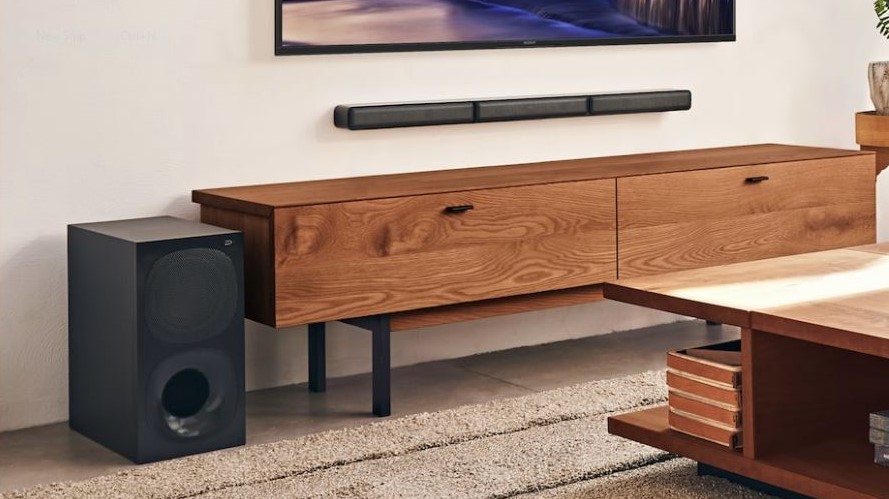Sony’s new 5.1 soundbar can connect wirelessly to Bravia TVs
The Sony HT-S40R soundbar is a 5.1 surround sound system with a focus on cord-cutting

Sony announced its newest soundbar system this week, and it could be a great fit for anyone wanting to keep their home cinema setup clear of unnecessary cables. The Sony HT-S40R is a full 5.1 surround sound kit, comprises a soundbar, subwoofer and dual rear satellite speakers, all of which connect to each other wirelessly.
What’s more, you can even wirelessly connect the soundbar to compatible Sony Bravia smart TVs. Most sound systems need an HDMI or optical connection, either to the TV or a source device like a games console. So for fans of clean living room aesthetics, or just those who want an easier setup, this wireless functionality could give the HT-S40R an advantage over even the best soundbars.
- Save with the best cheap soundbars
- The best TVs for home theaters
- Plus: Sonos Roam could raise the bar for all portable speakers — here’s why
The satellite speakers use mains power, but are otherwise wireless as well: they connect to a wireless amplifier that communicates with the soundbar and subwoofer, so there’s no need to run additional cables over the floor. Both satellite speakers, the wireless amplifier and the soundbar can all be wall-mounted as well.
Despite the wireless focus, the HT-S40R offers a range of physical connectivity options as well. These include an HDMI ARC port, optical and analog inputs and a USB port, so you can play music from flash drives. The HT-S40R also supports Bluetooth connectivity, for playback from phones and laptops.
The system’s total power output is a spirited 600W, and although there’s no Dolby Atmos compatibility, the HT-S40R still looks to be quite reasonably-priced for a full 5.1 kit with this much power.
U.S. pricing and availability are yet to be revealed, but the system costs will £350/€400 when it starts shipping throughout the U.K. and E.U. in May. That’s roughly equivalent to $500, less than what you’d pay for some standalone soundbars like the Bose Soundbar 500 and Sonos Arc.
Sign up to get the BEST of Tom's Guide direct to your inbox.
Get instant access to breaking news, the hottest reviews, great deals and helpful tips.
James is currently Hardware Editor at Rock Paper Shotgun, but before that was Audio Editor at Tom’s Guide, where he covered headphones, speakers, soundbars and anything else that intentionally makes noise. A PC enthusiast, he also wrote computing and gaming news for TG, usually relating to how hard it is to find graphics card stock.

